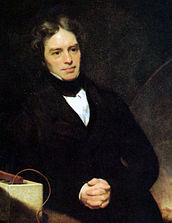THE DISCOVERY OF ELECTRICITY USE FOR LIGHT
The people who were dwelling in darkness have seen a brilliant light; and on those who were dwelling in the region of the shadow of death, on them light has dawned."(Matthew 4:16)
Electricity would remain little more than an intellectual curiosity for millennia until 1600, when the English scientist William Gilbert made a careful study of electricity and magnetism, distinguishing the lodestone effect from static electricity produced by rubbing amber. He coined the New Latinword electricus ("of amber" or "like amber", from ήλεκτρον [elektron], the Greek word for "amber") to refer to the property of attracting small objects after being rubbed. This association gave rise to the English words "electric" and "electricity", which made their first appearance in print in Thomas Browne's Pseudodoxia Epidemica of 1646.
Further work was conducted by Otto von Guericke, Robert Boyle, Stephen Gray and C. F. du Fay. In the 18th century, Benjamin Franklin conducted extensive research in electricity, selling his possessions to fund his work. In June 1752 he is reputed to have attached a metal key to the bottom of a dampened kite string and flown the kite in a storm-threatened sky. A succession of sparks jumping from the key to the back of his hand showed that lightning was indeed electrical in nature.He also explained the apparently paradoxical behavior of the Leyden jar as a device for storing large amounts of electrical charge.
In 1791, Luigi Galvani published his discovery of bioelectricity, demonstrating that electricity was the medium by which nerve cells passed signals to the muscles. Alessandro Volta's battery, or voltaic pile, of 1800, made from alternating layers of zinc and copper, provided scientists with a more reliable source of electrical energy than the electrostatic machines previously used.The recognition of electromagnetism, the unity of electric and magnetic phenomena, is due to Hans Christian Ørsted and André-Marie Ampère in 1819-1820; Michael Faraday invented theelectric motor in 1821, and Georg Ohm mathematically analysed the electrical circuit in 1827.Electricity and magnetism (and light) were definitively linked by James Clerk Maxwell, in particular in his "On Physical Lines of Force" in 1861 and 1862.
While the early 19th century had seen rapid progress in electrical science, the late 19th century would see the greatest progress in electrical engineering. Through such people as Nikola Tesla,Galileo Ferraris, Oliver Heaviside, Thomas Edison, Ottó Bláthy, Ányos Jedlik, Sir Charles Parsons,Joseph Swan, George Westinghouse, Ernst Werner von Siemens, Alexander Graham Bell and Lord Kelvin, electricity turned from a scientific curiosity into an essential tool for modern life, becoming a driving force of the Second Industrial Revolution.




Comments
Post a Comment